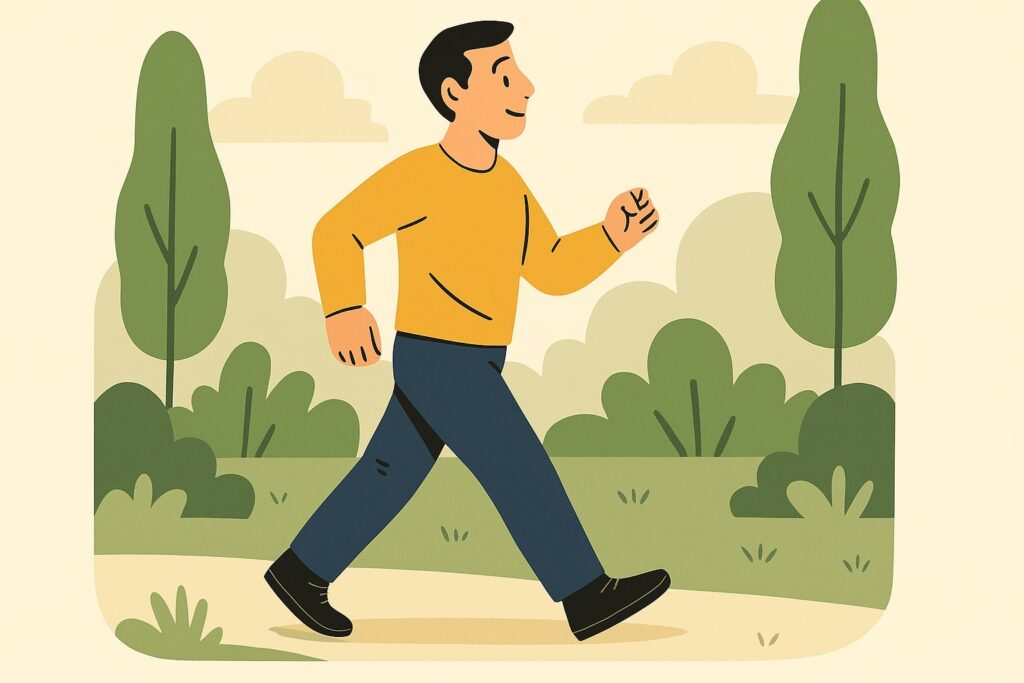Thinking of starting yoga? You’re in the right spot. Let’s talk about beginner yoga poses. These are simple, yet powerful, moves to kick off your practice. No need to be a pretzel! Poses like Mountain, Downward Dog, and Child’s Pose are perfect for newcomers. They’re about building strength and flexibility.
Yoga is more than just exercise; it’s a journey. It helps with stress, focus, and overall well-being. You don’t need fancy gear—just a mat and comfy clothes.
Whether you’re stretching in the morning or unwinding at night, these poses fit any schedule. Ready to dive in? Start small and watch your confidence grow. Enjoy the ride!
Index of Contents
ToggleKey Takeaways
- Choose a yoga style that matches your goals and physical abilities.
- Set up a simple, clutter-free space with minimal gear like a mat and blocks.
- Start practicing 2-3 times a week with short sessions focused on basic yoga poses.
- Explore yoga poses perfect for any schedule, either morning or evening.
- Incorporate meditation and breathing techniques to enhance mindfulness and relaxation.
Choosing the Right Yoga Style for You
Finding the yoga style that suits you can feel like trying to find the perfect pair of shoes. Everyone’s feet are different, just like everyone’s yoga journey. Hatha is ideal for those who want a slower pace, focusing on building strength and flexibility through foundational poses. If you fancy a bit more flow, then Vinyasa is your dance.
It’s all about moving with your breath, almost like a graceful choreography. Feel like you need some extra guidance? Check out Iyengar. It’s all about precision and alignment, often using props to help you get there. Begin with simple movements, and your body will thank you. Remember, the goal is to find a class that feels right. Experiment until you discover your yoga groove!

Setting Up Your Yoga Space at Home
Crafting a calming space at home is key for your yoga journey. Choose a quiet corner with good lighting, free from distractions. A quality mat is a must-have, while props like blocks and straps can be handy for those tricky stretches. Want to spice things up? Add a splash of nature with plants or a serene painting.
Lighting candles or diffusing essential oils can set the mood, too. Keep it simple, though; clutter can cramp your flow. Once settled, dive into those beginner moves. They’re like the building blocks of yoga, easing you into deeper practice. With your space ready, you’ll be bending and stretching with confidence. Isn’t it amazing how a little setup can transform your routine? Get comfy and enjoy!
Gathering Essential Yoga Accessories and Props
Gather the right accessories to support your yoga journey. Think of a quality mat, blocks for those tricky stretches, and straps to help you reach further. Comfortable clothing with four-way stretch is a game-changer for ease of movement. These tools can make a world of difference, especially for those starting out. They help you maintain proper alignment and ensure comfort during practice. Imagine them as your trusty sidekicks, always there to lend a hand. Let’s face it, without the right gear, finding your groove in those initial poses might feel like wrestling a greased pig! Here’s a quick list to get you started:
- Yoga Mat
- Blocks
- Straps
- Comfortable Clothing
- Bolster
- Blanket
- Eye Pillow
Creating a Consistent Yoga Routine for Beginners
Building a reliable yoga routine for newcomers involves blending discipline with a sprinkle of fun. Kicking off with beginner yoga poses, consider a twice-weekly schedule. Short, focused sessions on basic poses lay a strong foundation. Find joy in small wins—like mastering the Mountain Pose. Pair poses with breathing exercises for a calming start or end to your day.
Using a calendar or reminder app helps keep track of your sessions. Even rope in a friend for extra motivation! This approach makes yoga more engaging and less of a chore.
| Day | Suggested Beginner Yoga Pose | Duration | Focus Area |
|---|---|---|---|
| Monday | Mountain Pose | 10 minutes | Balance |
| Wednesday | Downward Dog | 15 minutes | Flexibility |
| Friday | Child’s Pose | 8 minutes | Relaxation |
| Saturday | Warrior Pose | 12 minutes | Strength |
| Sunday | Tree Pose | 10 minutes | Balance |
Finding the Best Time for Your Yoga Practice
Finding the ideal moment for yoga can be a game-changer. Just like picking the right TV show to binge, the time of day you practice affects your body’s response. Early risers might enjoy morning stretches that boost energy, while night owls could prefer evening sessions for unwinding. Test different times to see what clicks with your rhythm and routine. Why not try practicing those beginner-friendly moves between your morning coffee and afternoon snack? Kickstarting your day with a few minutes of quiet focus can set a positive tone. Remember, consistency is your best friend.
| Day | Pose | Duration | Benefit |
|---|---|---|---|
| Monday | Cat-Cow | 5 mins | Warm-up |
| Tuesday | Cobra | 7 mins | Back stretch |
| Thursday | Triangle | 10 mins | Core strength |
| Saturday | Bridge | 12 mins | Hip opener |
| Sunday | Seated Forward | 8 mins | Relaxation |
Understanding the Benefits of Regular Yoga Practice
Grasping the perks of a steady yoga routine unveils numerous advantages. Not just in flexibility, but in boosting strength and mental peace. Picture yourself mastering beginner stretches. They seem simple, yet they activate hidden muscles, enhancing overall agility.
Stress? Yoga melts it away. Research reveals that consistent practice calms the nervous system, offering a blissful escape from daily chaos. Those early morning sun salutations or evening stretches can change your mood dramatically.
Feelings of empowerment follow as you progress. Each session becomes an investment in your wellness bank. It’s fascinating how these practices, though gentle, powerfully impact mental focus and self-awareness. With each pose, you cultivate a balanced mind-body connection, enriching life beyond the mat.
Overcoming Common Challenges in Yoga Practice
Facing hurdles in yoga practice? It’s a common tale. Many beginners find maintaining flexibility and consistency tricky. But fear not, there’s a way through this! Start by embracing adjustments. If touching toes seems a stretch too far, bend those knees. Set achievable goals, like spending just a few minutes daily on foundational moves. Over time, you’ll notice progress.
Ever tried yoga with a friend? It transforms the routine into a social event, making consistency easier. Celebrate small victories, too. Mastering a new position, no matter how simple, deserves a pat on the back. Remember, yoga is more about the journey than the destination. Keep it fun and light-hearted; soon enough, you’ll be flowing through those poses with newfound confidence!
Incorporating Meditation into Your Yoga Sessions
Bringing meditation into your yoga routine adds a new layer of tranquility and awareness. Start each session with a few quiet moments to set your intention. Picture this: you’re on your mat, ready to flow through your practice, and you’ve already found a sense of calm through meditation. This shift can transform beginner yoga positions from simple movements to a mindful journey. Integrating meditation can make each pose feel more connected and meaningful.
For instance, after flowing through your familiar poses, take a moment to sit quietly, focusing on your breath. Feel the energy from your practice settle. This pause enhances your connection to the moment, creating a more fulfilling experience. Meditation doesn’t just end when yoga does; it can echo into the rest of your day.
Developing Mindfulness Through Breathing Techniques in Yoga
Practicing mindfulness through different breathing methods can enhance your yoga routine. Picture yourself in a serene space, focusing on each breath. This not just calms the mind but also connects you deeper with the practice. Incorporating breathing exercises like the Ujjayi breath can be a game changer, especially for those starting out. This technique involves breathing through the nose with a slight constriction in the throat, creating a soothing ocean-like sound. As you perform beginner-friendly postures, this rhythmic breath can help maintain focus and balance. It’s like having an inner metronome, guiding each move. Remember, every inhale and exhale is a step towards mindfulness. Breathing right can turn even basic positions into a meditative experience.
Exploring Yoga Poses for Different Skill Levels
Exploring the vast array of poses for various skill levels can be a rewarding journey. Beginners often start with positions like Mountain Pose and Child’s Pose. They lay the foundation for future growth. These positions focus on alignment and stability, making them ideal for newbies. As confidence builds, introduce variations of these poses to enhance flexibility and strength.
For those who are more experienced, transitioning to complex positions like Crow Pose can be a thrilling adventure. It’s all about finding the balance between challenge and comfort. With each session, a gradual progression helps in mastering these techniques. Always listen to your body and adjust as needed. Yoga is about growth, not perfection. Remember, every pose tells its own unique tale.
Conclusion
Yoga is a journey, not a race. As you start, remember to savor each step. Whether it’s finding your favorite style or setting up a cozy yoga space, each part is special. Picture your yoga mat as a magic carpet, ready to take you places.
Starting with basic poses is a smart move. These poses build your strength and flexibility. They also give you confidence to try new things later. Don’t stress about perfection. Listen to your body. Some days you’ll feel like a yoga superstar; other days, not so much. That’s okay.
Find what works for you. Maybe it’s a morning stretch or a calming evening routine. The key is consistency. So grab your mat, breathe deeply, and enjoy each moment. Your yoga adventure is just beginning!
FAQ
- What are the best yoga styles for beginners?
Starting yoga can feel a bit like trying to decide what ice cream flavor to pick. Hatha, Vinyasa, and Iyengar are great choices for beginners. They focus on basic poses and breathing, helping you build strength and flexibility. Choose a style that fits your fitness goals and personal preferences. It’s important to start slowly and enjoy the journey.
- How can I create a yoga space at home?
Think of your yoga space as your personal oasis. Find a spot that’s calm and clutter-free. You’ll need a quality yoga mat and maybe some props like blocks and straps for support. Keep it simple and cozy. This will make your practice more enjoyable and help you stay committed.
- What yoga accessories do I need as a beginner?
You don’t need a lot to start yoga. A good mat is like a trusty sidekick. Blocks and straps can be helpful, especially if you’re not super flexible yet. Wear comfortable clothing that stretches with you. These tools make your practice more comfortable and safe.
- How often should beginners practice yoga?
Start with 2-3 times a week, like dipping your toes in the water. Short sessions focusing on basic poses and breathing are best. As you get more comfortable, you can practice more often. The key is consistency, so make it a routine that fits your life.
- What time of day is best for practicing yoga?
There’s no one-size-fits-all answer here. Morning yoga can boost your energy for the day, like a cup of coffee. Evening sessions can help you unwind. Try different times to see what works best for you. The important part is fitting it into your schedule without stress.



